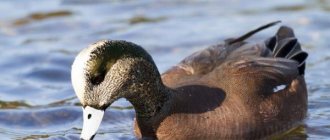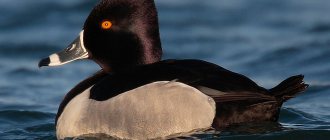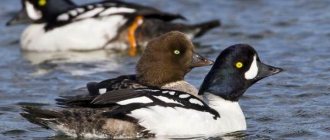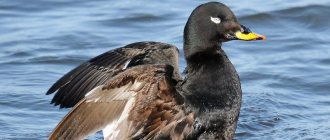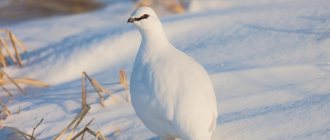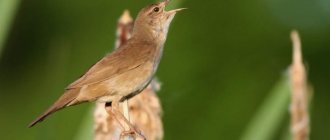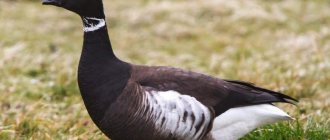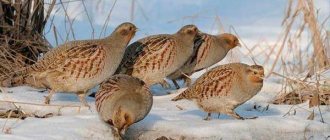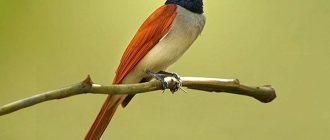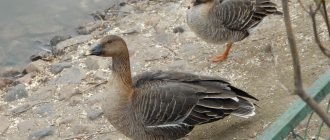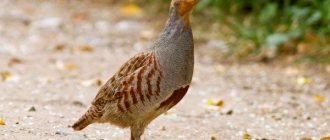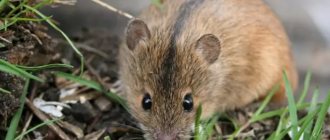Merganser ducks belong to the diving group. They live in fresh water bodies and sea bays with dense coastal vegetation. Ducks try to stay close to the shore to hide in the grass from danger. For food, they swim to deep water, where they catch small fish. Birds are capable of diving to a depth of 4 m, swimming under water for more than 10 m. A distinctive feature of individuals of the order of mergansers is the forelock on the head.
Merganser duck
It is formed by a thin, needle-shaped feather. Feathers point upward or backward. Another feature is a strong beak with large teeth along the perimeter. Ducks express water through them. There are 4 varieties of mergansers.
The bird is commercial. One of the species is considered completely extinct. This is an Auckland merganser that lived in New Zealand. What characteristics do individuals of different lines have? Where do they live, what do they eat? How do they spend their nesting period?
Distribution area
What the breed looks like, photo:
Holarctic species, distribution area - forest-tundra and northern boreal forest of the western and eastern hemispheres.
In Eurasia, it lives mainly east of northern Denmark and Scandinavia, but small populations have been recorded in the Alps, Great Britain and Iceland.
In the north it is found up to the limit of tree vegetation: on the Kola Peninsula and the European part of Russia up to 67° N. sh., on Yamal up to 69° N. sh., on the Yenisei to 68° N. sh., in the Vilyuya basin up to 66° N. sh., in the Lena basin up to 64° N. sh., east to the Kolyma Range to the 64th parallel, to the northern regions of Chukotka.
Habitats of large mergansers
On the American continent it breeds all the way from west to east to north from southern Alaska to Quebec and Newfoundland.
In the Old World, to the south it breeds to northern Denmark, the central regions of Poland and Belarus, the Pskov region, the Mologa River valley, the upper parts of the Belaya, Ufa and Ik river basins, in Western Siberia up to 55° N. sh., east to Lake Zaisan, Altai, northern regions of Mongolia, the southern part of the Amur basin, northeastern China and the southern tip of the Sikhote-Alin mountain range.
In North America south to Northern Mexico on the west coast and the northeastern US states on the east.
Migrations
Migratory or partially migratory species. In winter, northern populations migrate to temperate latitudes: thus, birds nesting in Scandinavia and the polar north-west of Russia mostly move to areas near the coasts of the Baltic or North Seas, but also in smaller numbers to water bodies in Central and Southern Europe.
Small concentrations of wintering birds have been noted in the coastal areas of the Black and Caspian Seas, as well as in Central Asia - according to experts, these birds most likely nest in Russia east of Pechora. In the Far East, wintering sites are located in Japan, Korea and coastal areas of China.
The number of migratory birds fluctuates from year to year: obviously, during mild winters, a significant part of them remain in their nesting areas or migrate over shorter distances. The autumn flight begins only with the arrival of frost, when the water is covered with a thin layer of ice. More southern populations also tend to be sedentary, making vertical migrations or migrating over short distances.
Habitat
During the nesting period, it inhabits freshwater bodies of water with wooded shores: small unovergrown lakes with open reaches, reservoirs, fast-flowing rivers in the upper reaches, where it usually stays close to the shore in the shade of trees.
To take off, the bird requires a fairly large distance on the water - for this reason, it often avoids very small bodies of water, which fully meet all other living conditions.
Unlike the long-nosed merganser, the large merganser prefers more elevated areas of the landscape, in particular the foothills and lower tier of mountains. Winters on large ice-free lakes and lagoons with brackish water, occasionally in river estuaries and on sea coasts. In February-March 2012, large mergansers were seen wintering on the Dnieper near Kyiv.
WHERE DOES IT LIVE?
Lutok usually settles on the banks of reservoirs surrounded by forest, in places rich in food. It does not nest near bodies of water with fast currents, preferring small lakes and rivers with slow currents, surrounded by coniferous or mixed forest.
These ducks nest in hollows. They often fly from one place to another in search of rich food sources and comfortable, quiet places to rest. In order to rise into the air, they do not need acceleration, so lutki live even in small bodies of water that are not suitable for life for other waterfowl.
Loots love company and stay in small groups, often with other ducks, especially common goldeneyes. They spend the summer in northern Eurasia. The northern border of the range coincides with the border of coniferous forests. In winter, these ducks fly south - to where they can find bodies of water that are at least partially ice-free; Even a small ice hole is enough for them.
Description of the breed
Great merganser
(lat. Mergus merganser) is a large duck with a narrow, elongated beak, usually associated with the quiet rivers and lakes of the northern taiga.
This is the largest and most common of the mergansers, surpassing the mallard in size.
Unlike the latter and most other species of the duck family, it feeds not on plant foods, but on fish - this is evidenced by the sharp teeth on the hook-shaped beak, which the birds use to hold slippery prey.
As a rule, it lives in pairs or small groups, but sometimes in wintering areas it forms large flocks consisting of several thousand individuals. In most areas the bird is rare or very rare, but the overall population remains stable and does not cause concern to environmentalists.
The large merganser has a large body size. The horizontally elongated body reaches 58–65 cm in length.
Distinctive features of the species:
- sweeping wings. When opened, their size is approximately 90 cm. In large individuals, the figure reaches 1 m. When folded, they fit tightly to the body, repeating its shape;
- steering tail. This part of the body is small in size, but fans out in flight to control the process;
- Long neck. By duck standards, the merganser's neck is quite elongated. It is strongly built, slightly curved when at rest;
- unusual beak. Thin, sharp, red, tip pointing down;
- high paws. Thin, stable shins, 3 toes with membranes between them. Colored orange-red;
- head with a tuft. Females have a long tuft of hair. It is absent in males. The head itself has an average size proportional to the body;
- eyes with iris. The large black pupil in different individuals is framed by a brown, red, gray or black rim. The eyes of drakes are always lighter.
Color
Greater mergansers have well-developed external sexual differences. Duck and drake differ significantly in plumage colors.
Male
Drakes change color according to different seasons of the year. In spring, the shades are as bright as possible to attract “ladies”. During the summer molt, the colors lighten and become as similar as possible to the color of ducks.
The feather on the surface of the back is distinguished by thick blackness. The wings are black and white. The tail and belly are muted gray. On the chest, at the base of the neck and in the area of the goiter there are white spaces with reddish or reddish inclusions.
The upper part of the neck and head are dark with a pronounced green metallic sheen. There may be small gray specks on the lower legs, and sometimes there is a black dot at the tip of the beak.
Female
The ducks of the Great Merganser are more faded in plumage. Light gray shades predominate over the entire surface of the body, including the sides and tail. Only the head and neck stand out in a brownish-rusty color. There are whitened spaces at the bottom of the sternum, throat, belly, and wings.
Character
Great Merganser ducks are restive, but not scandalous. Fights between males are observed only during mating periods or in cases of danger. Both sexes are talkative and love to talk. Females sound more crackling, somewhat croaking. Drakes have a muffled voice, an abrupt cry, similar to the syllables “ba-a-bab”. Individuals are agile and excellent divers. They are willing to be tamed.
LUTK OBSERVATIONS
Between November and April, the lutok inhabits the water bodies of Central Europe. Most of the birds at this time live on the coasts of the North and Baltic seas, and small groups reach lakes and rivers in the alpine foothills. In winter, loots willingly live in artificial reservoirs and flooded quarries. During severe winters, the number of these ducks in Northern Europe increases. The male of this species is distinguished by white plumage with thin black stripes on the back and sides. The female has a dark gray back and a light gray belly. She has a brown nape, white cheeks and the same dark glasses as the male.
Productivity
The Great Merganser is gaining weight quickly. Individuals reach their peak fatness towards the end of autumn. The percentage of fat in such ducks is high. The meat does not have a very pleasant smell and taste due to its nutritional characteristics. Carcass weight varies from 900 g to 2.2 kg.
A duck produces 8-13 eggs per laying. At home, wear life can be slightly increased by constant feeding. The eggs are creamy white and large. Hatching and survival rates are up to 100%.
Edible or not?
Merganser duck meat is edible. Due to the fact that the bird feeds on fish, it has a slight fishy smell and is dark in color. Some hunters believe that there is no point in hunting this wild bird. If you remove the skin with a thin layer of fat, underneath it will be a not very large meat carcass. Merganser meat is a bit tough, but to achieve better taste, it is better to cook it with the meat of another bird. But this is just the opinion of some hunters.
Reproduction
The breed reaches sexual maturity at approximately 2 years of age. These ducks are characterized by choosing a partner for a long time. In the wild, females and males make acquaintances before arriving to nest.
They show off in front of each other in advance, stretch their necks, and the drakes make plaintive sounds. Couples or small families consisting of one “husband” and several “wives” are already starting nesting.
Ducks build nests. At the same time, drakes protect their ladies, walking nearby.
The location for the hen's future refuge may be as follows:
- crack in rock;
- tree hollow;
- dense bush;
- on the ground among dense thickets of grass;
- abandoned buildings.
As a rule, the search is carried out within a radius of 1 km from the reservoir. Hens try to choose higher places. They go down when suitable space cannot be found. Large mergansers belong to the type of wild ducks that willingly go to prepared nests.
They perceive boxes and crates in their places of residence with trust. The main material for building and covering the nest is down from the female’s sternum. The ducks themselves pull it and compact their home.
Great merganser in the nest
The hen sits on her eggs for 32 days. Each produces up to 30 chicks. There are cases of death of “neighbors” when one mother has to take up to 40 eggs under her wing. For merganser ducks, this action does not cause any inconvenience due to their large body and their own weight.
Males do not participate in the process of breeding ducklings. Often they immediately leave their female. At home, there is no need to get food, so drakes often become responsible, caring daddies.
The babies hatch with olive-brown fuzz all over their bodies. At the age of two days they jump out of the nest and begin to run after the duck. Development is proceeding slowly. '
Large mergansers learn to swim no earlier than the 10th day of life, and they fly on the wing only at 2.5 months. Meanwhile, the chicks run quickly both on land and on water. Due to this ability, they skillfully hide from predators and other dangers.
How do they reproduce?
At two years old, the merganser reaches sexual maturity. These birds are very family-oriented and often live in pairs, excluding flights and fishing in water bodies.
Nests are built near bodies of water (no more than 1 km), in the hollows of massive large trees, tall grass, deep and narrow gorges. The bottom of the home is covered with down. The female lays 10-20 eggs and incubates them for 4-6 weeks. At this time, the male lives separately, nearby, providing food for the young family.
Babies are born feathered. After three days in the nest, they are ready to go to the pond and dive for the first time.
Only after 2 months do the chicks begin to fly. And we are talking about migratory individuals. Sedentary birds can fly only after 70-80 days.
Nutrition
The Great Merganser feeds mainly on fish. A peculiarity of this duck is its preference for large species of aquatic inhabitants. The breed's menu includes trout, grayling, salmon, barb, eel, herring, pike, roach and other varieties of 25-36 cm in length.
Fry, mollusks, larvae, crustaceans, worms, and other small invertebrate organisms are also consumed by mergansers, but in much smaller quantities. On the coasts, bugs and other insects are sometimes caught as delicacies. The basis of food depends on the time of year and the area, since hunting takes place in bodies of water close to the stopping place.
Individuals use several “built-in” devices to obtain food:
- beak. In addition to the curved tip, it has sharp teeth along the edges. With their help, birds hold slippery food and push it into the throat;
- torso. The streamlined shape allows you to dive deep enough without being pushed out. Ducks have the opportunity to carefully examine the surrounding water for hunting;
- paws. The membranes and length allow you to move freely under water. At a good speed, smooth movements are maintained, which allows you to avoid scaring away the fish.
More often, mergansers feed collectively. It happens when individuals go out hunting alone, but this is typical when living in a small family. Until the 10th day of life, ducklings feed in shallow water, then begin to dive for fry.
What does a bird eat?
Merganser diet:
- fish;
- crustaceans;
- aquatic insects;
- worms
The scaly merganser is a carnivorous bird. Lutok feeds on fish only in winter and early spring; the rest of the time it does not neglect plants. Ducks eat trout, salmon, eel, grayling, roach, barb and pike. They also feed on herring and sea fish. The type of food depends on the nesting or wintering location.
To catch fish, mergansers lower their heads under the water and mark a target. The birds dive completely, grab the fish with their beaks and emerge. They swim underwater with their paws. Thanks to the teeth, the fish does not slip out of the beak. During migration, mergansers engage in general fishing, similar to synchronized swimming. Birds swim in a flock across the lake, and then dive at the same time.
Natural enemies
The merganser duck is not an easy prey for natural enemies. It has large dimensions, a sharp beak, and sharp teeth. She is able to protect herself and her offspring. However, ducks do not always manage to defeat their opponents.
Among the most dangerous natural enemies of mergansers are:
- foxes and raccoon dogs. These predators destroy bird nests, hunt and eat adult birds. They track merganser nests by scent;
- predator birds. The greatest danger is posed by crows, hawks, large seagulls, eagles, eagle owls, and magpies. These animals usually attack small mergansers or ducklings;
- otters, minks, martens, wild cats. These predators kill mergansers less often, because for them a two-kilogram duck often becomes an unbearable prey;
- some reptiles . These animals mainly eat eggs and small ducklings while their mother takes them for a walk to the pond.
Some species of ducks are killed by large fish. Such fish rarely attack mergansers. This type of duck suffers more from people. People still hunt wild mergansers and kill them in large numbers.
Almost every hunter dreams of such prey, because merganser ducks are very beautiful. Such hunting has led to a significant reduction in the merganser population throughout its natural habitat.
Population and species status
The merganser duck is a rather rare species. Despite the stability of the overall population, most species of these birds are endangered. In many countries, the duck is considered endangered and is listed in the Red Book.
What is the reason for the extinction of the species? Ecologists and other scientists identify several factors that negatively affect the number of mergansers.
This:
- uncontrolled shooting by hunters. Despite the ban and protection of these birds, the shooting of mergansers continues. These lead to a significant reduction in the number of animals;
- water pollution. For a long life, the merganser needs clean water and fish. Water bodies in most countries are heavily polluted, and there is less and less food for ducks. The quality of food also suffers, which negatively affects the health of birds;
- deforestation. Many species of mergansers live in forests located close to water bodies. Deforestation deprives birds of the opportunity to nest and reproduce;
- active human life. People pollute the air, soil, and actively develop wild nature.
All of the above factors lead to a slow but sure reduction in the number of mergansers. Also, a lot of these ducks die during long flights. Ducks that lead a sedentary lifestyle live much longer.
INTERESTING FACTS, INFORMATION…
- Lutka is called the “white nun” in the UK for its characteristic bright black and white color.
- When leaving the incubated clutch to search for food, the duck covers the eggs with a downy “blanket” to keep them warm.
- Lutka chicks, which are born in hollows, have strong claws, with which they climb to the hole in the wall. Falling down is usually not accompanied by injury, since the chicks are very light and protected by down.
- The mating song of the male resembles the sound that the mechanism of a watch makes during winding.
- Lut hunting stops in winter, because the meat of those birds that feed on fish at this time acquires an unpleasant fishy aftertaste.
Protection of merganser ducks
The genus of mergansers cannot be called numerous, but its overall population is quite stable. However, certain species of such ducks are on the verge of extinction, are listed in the Red Books of many states and require protection.
Rare and endangered species include scaly and Brazilian mergansers. Large and long-nosed ducks are out of danger today and maintain a sufficient population throughout their natural habitat.
To protect merganser ducks and restore their high population, the following measures are being taken:
- constant monitoring. Scientists carefully monitor the current state of affairs, monitor the number of ducks and their health status. They study factors that may negatively affect the population of these birds;
- creation of protected parks. Special parks with all the necessary conditions are created for such ducks. There the birds are under reliable round-the-clock protection; breeding birds in captivity.
Unfortunately, some species of mergansers have already become extinct. Thus, the Auckland merganser can now only be seen in the museum. Wild goats, cats and pigs are to blame for his death.
Habitats
The birds live in the countries of Central and Northern Eurasia, as well as North America. As we have already said, birds do not winter in their native places. Birds fly to warmer regions in late October – early November. The birds return quite early, so you can meet them towards the end of February in the central regions of our country. Ducks arrive in groups, which usually include ten to twenty individuals.
It should be emphasized that before the onset of winter cold, ducks migrate in huge flocks. Mergansers prefer to nest on picturesque lakes, as well as rivers with crystal clear water. At the same time, they like mountainous terrain more than plains. But, of course, the main factor on which the choice of nesting site depends is the subspecies of duck. For example, the smallest mergansers - lutki - live mainly in forests.
